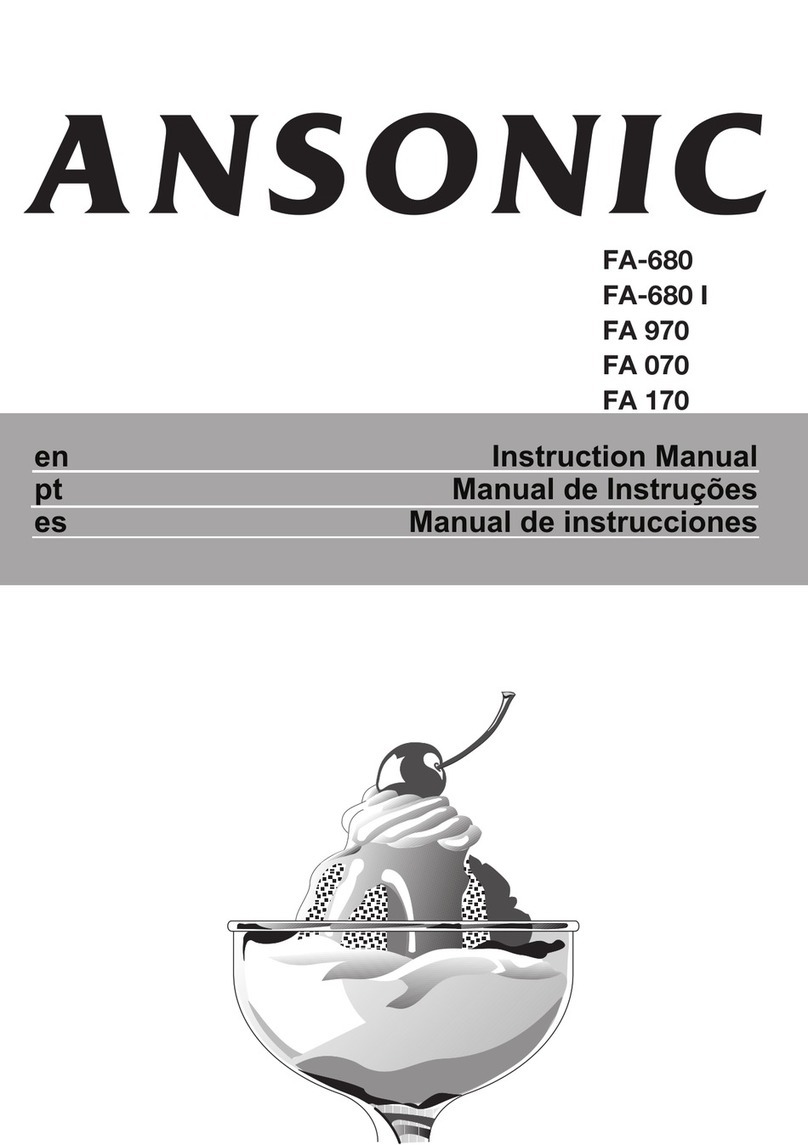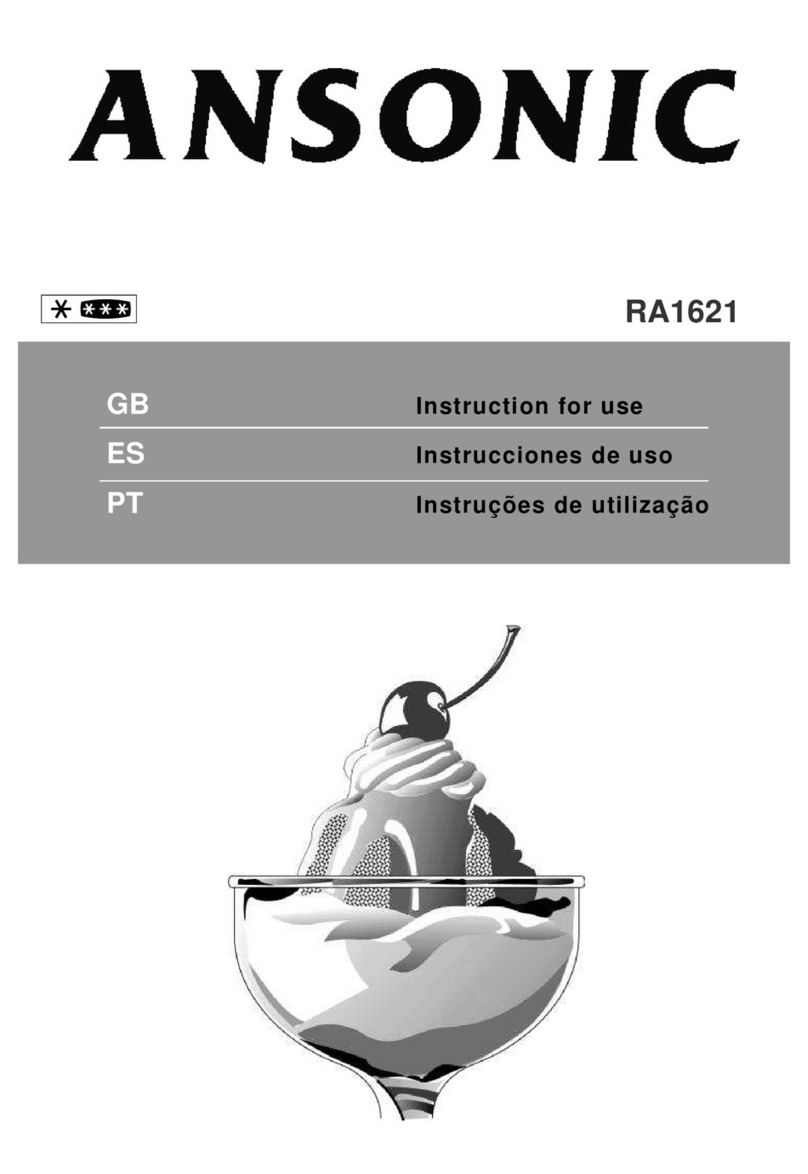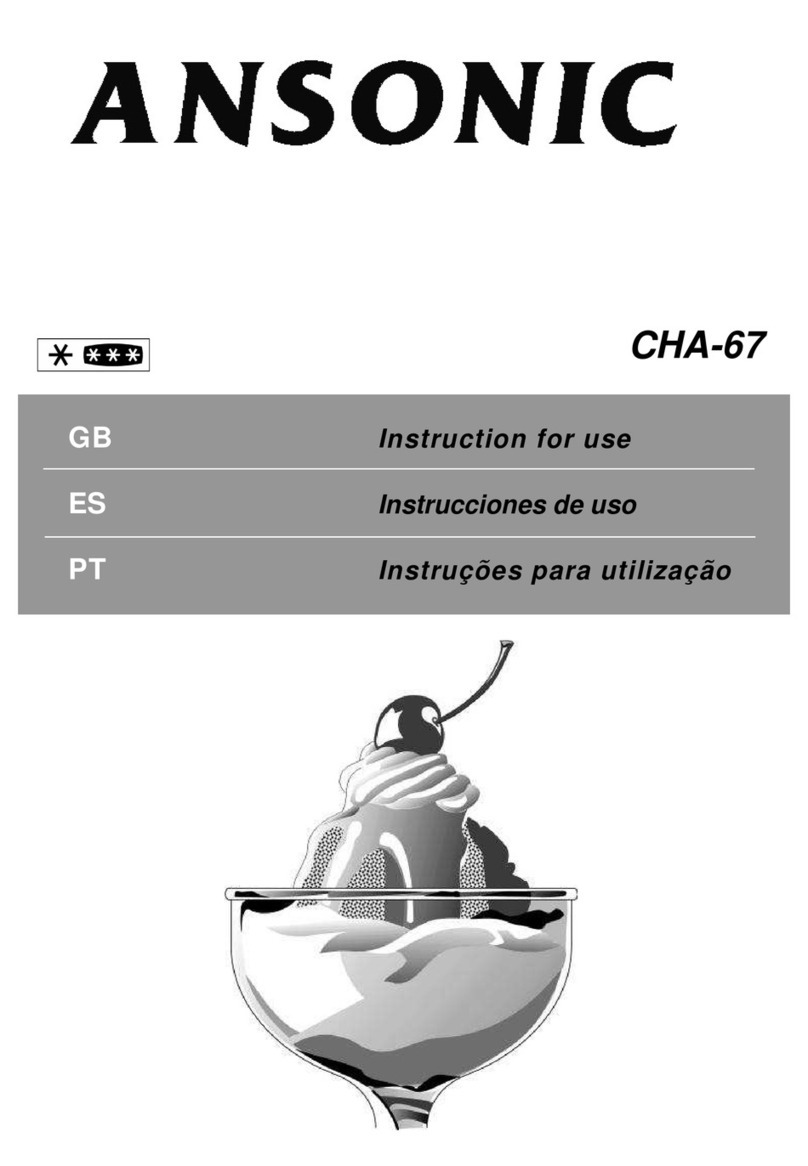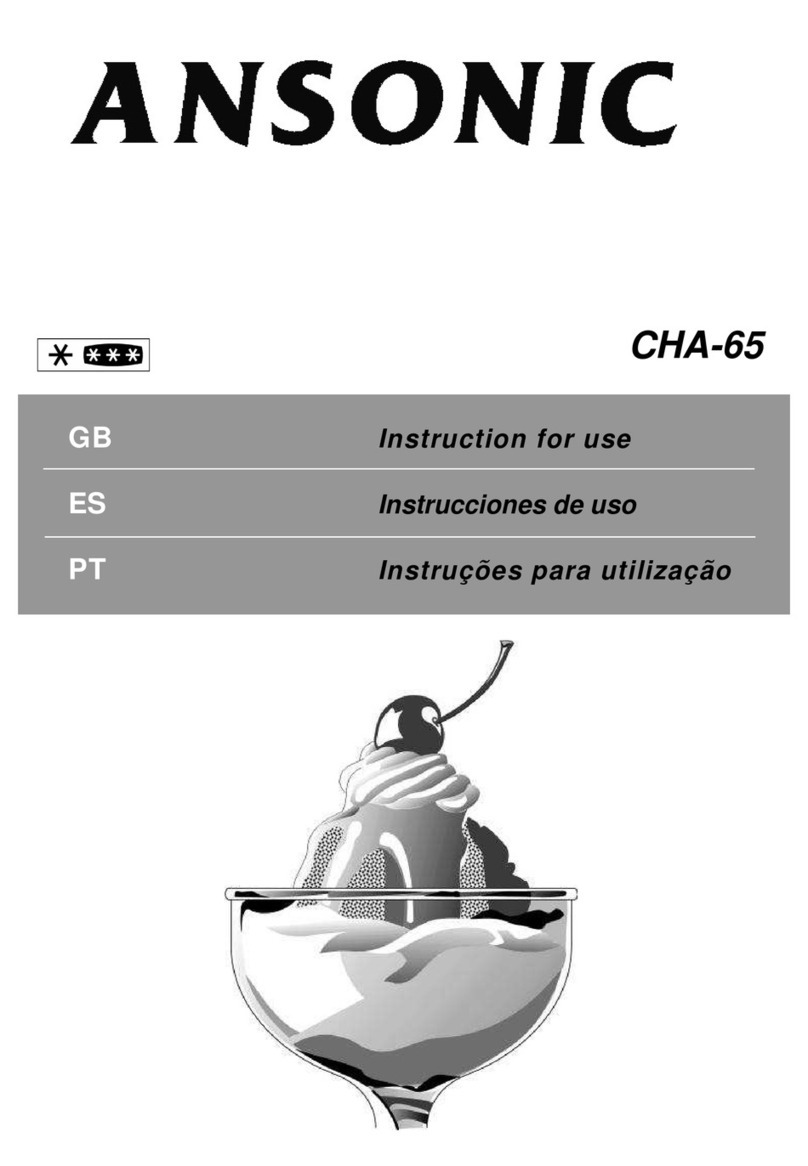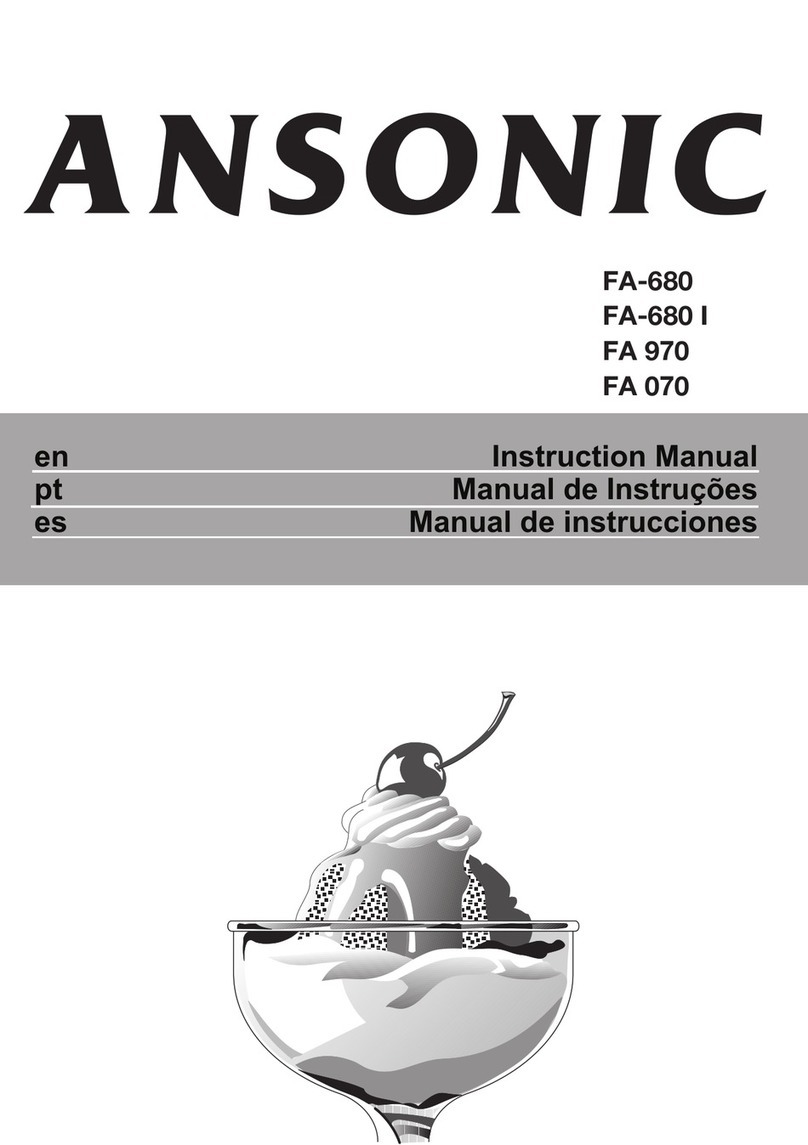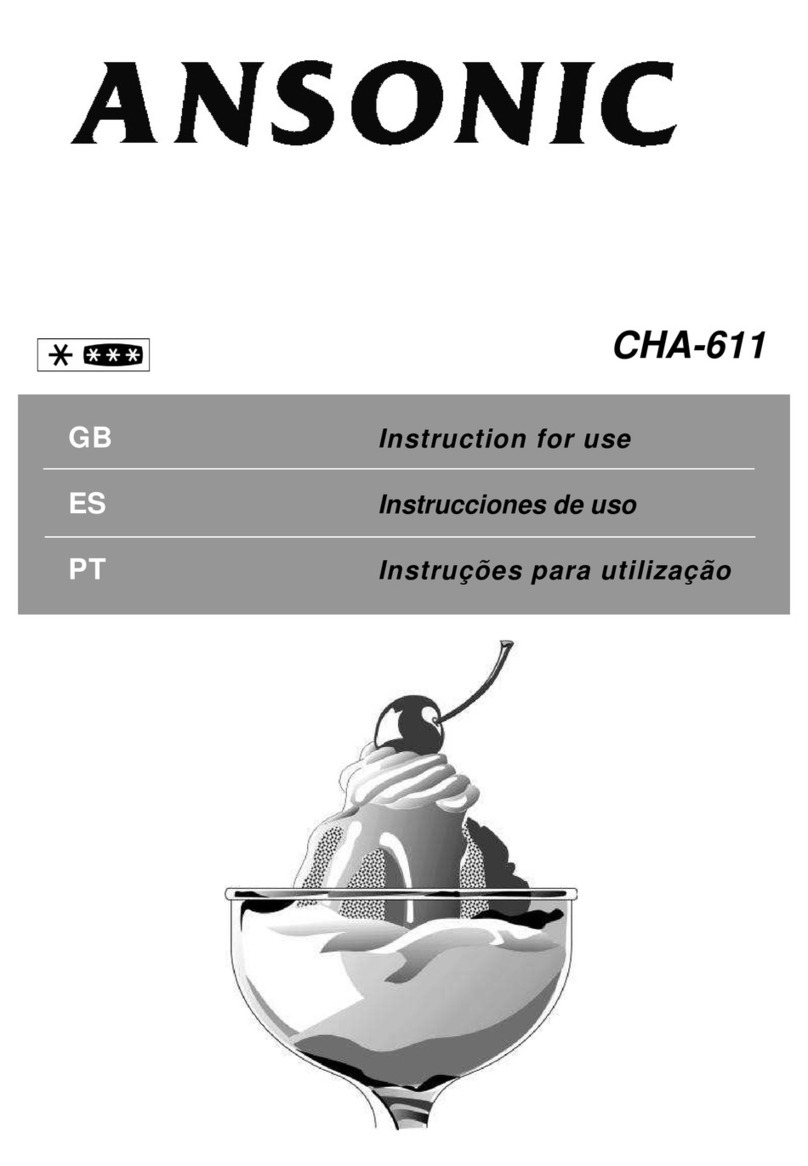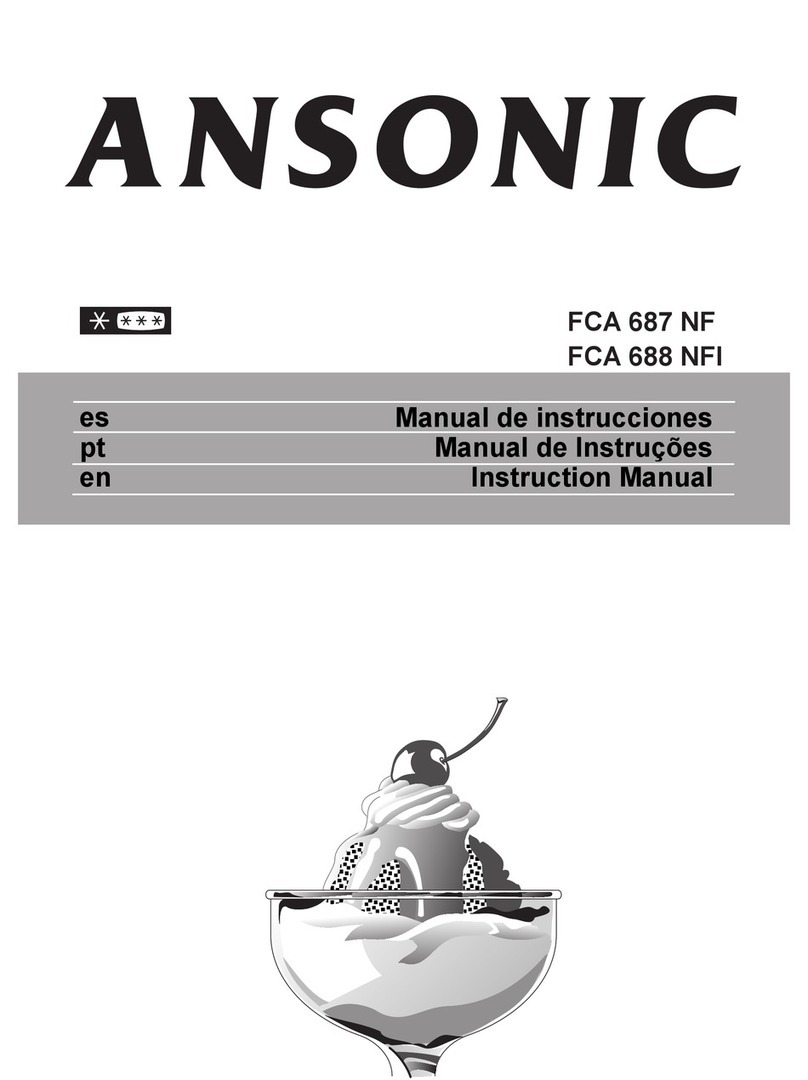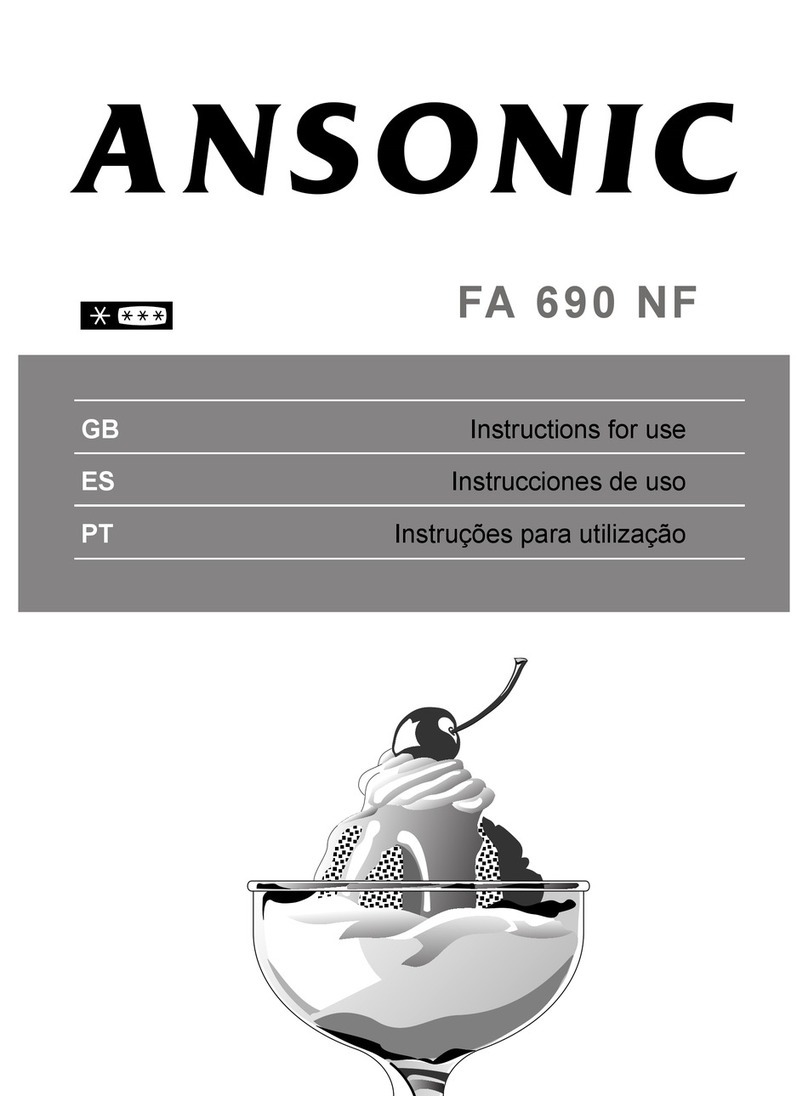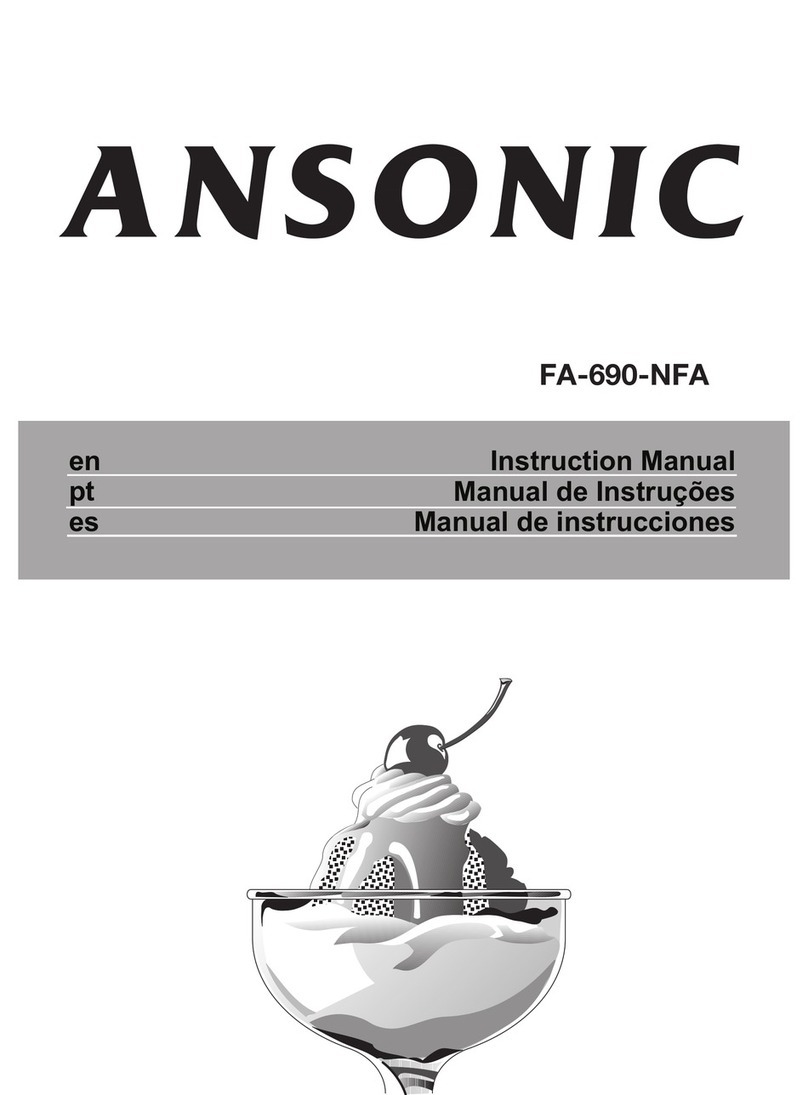Storing frozen food
The frozen food compartment is marked with
symbol.
The frozen food compartment is suitable for
the storage of pre-frozen food. The
recommendation for storage, as stated on the
food packaging, should be observed at all
times.
Defrosting of the appliance
Excessive build-up of ice will affect the freezing
performance of your device.
It is therefore recommended that you defrost
your appliance at least twice a year, or
whenever the ice build-up exceeds 7 mm.
Defrost your device when there is only little or
no food in it.
Take out the deep-frozen food. Wrap the deep-
frozen food in several layers of paper, or a
blanket, and keep it in a cold place.
Unplug the appliance or switch off the circuit
breaker to start the defrosting process.
Take out the accessories (like shelf, drawer
etc.) from the appliance and use a suitable
container to collect the thawing water.
Use a sponge or a soft cloth to remove thawing
water if necessary at the freezing compartment
and frozen food compartment
Keep the door open during defrosting.
For quicker defrosting, place containers with
warm water inside the appliance.
Never use electrical devices, defrosting sprays
or pointed or sharp-edged objects such as
knives or forks to remove the ice.
After the defrosting is done, clean the inside
(see the section “Cleaning and Care”).
Reconnect the appliance to the mains. Place
the frozen food into the drawers and slide the
drawers into the freezer.
Freezing
Freezing food
The freezing compartment is marked with
this symbol.
You can use the appliance for freezing fresh
food as well as for storing pre-frozen food.
Please refer to the recommendations given
on the packaging of your food.
Attention
Do not freeze fizzy drinks, as the bottle may
burst when the liquid in it is frozen.
Be careful with frozen products such as
coloured ice-cubes.
Do not exceed the freezing capacity of your
appliance in 24 hours. See the rating label.
In order to maintain the quality of the food, the
freezing must be effected as rapidly as possible.
Thus, the freezing capacity will not be
exceeded, and the temperature inside the
freezer will not rise.
Attention
Keep the already deep-frozen food always
separated with freshly placed food.
When deep-freezing hot food, the cooling
compressor will work until the food is completely
frozen. This can temporarily cause excessive
cooling of the refrigeration compartment.
If you find the freezer door difficult to open just
after you have closed it, don’t worry. This is
due to the pressure difference which will
equalize and allow the door to open normally
after a few minutes.
You will hear a vacuum sound just after closing
the door. This is quite normal.
Making ice cubes
Fill the ice-cube tray 3/4 full with water and
place it in the freezer.
As soon as the water has turned into ice, you
can take out the ice cubes.
Never use sharp objects such as knives or
forks to remove the ice cubes. There is a risk
of injury!
Let the ice cubes slightly thaw instead, or put
the bottom of the tray in hot water for a short
moment.
en en
4
